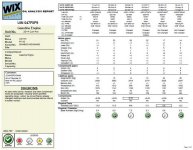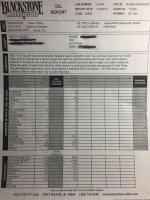Attached below is the analysis record for my Spyder. Please note in the analysis reported 2 Apr 18 the water content was listed at 0.72% which prevented a physical viscosity test. I contacted the lab about the report and the technician I spoke with said the increased water percentage was due to condensation in the oil that was the result of me not running the engine long enough to get the oil to proper temperature. Yes, it was my fault because I was not riding the bike far enough each morning going to and from the gym. The subsequent analyses showed the Amsoil held its viscosity very well into the 9,000 mile range. My next oil change is due in about 1,300 miles. The learning points for me:
a. Since my bike is pretty much my daily transportation, don't use my Spyder for short ride trips during winter months. My winter route one way distance to the gym became 20 miles.
b. The Mobil 1 held its viscosity at shorter intervals but I made the switch because I wanted to run it the full 9,300 but didn't really know if it would go the full 9,300 and still retain 40 weight viscosity. Maybe, maybe not. With the demonstrated performance of the Amsoil I see no reason to switch back to Mobil 1.


